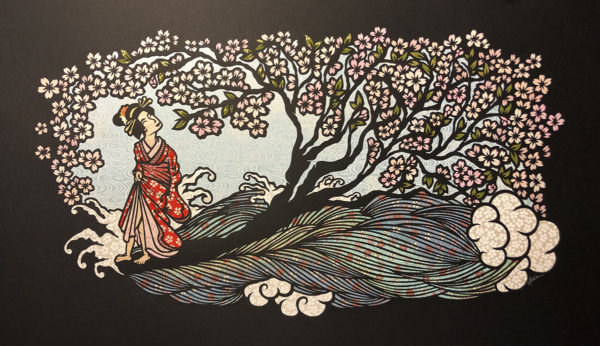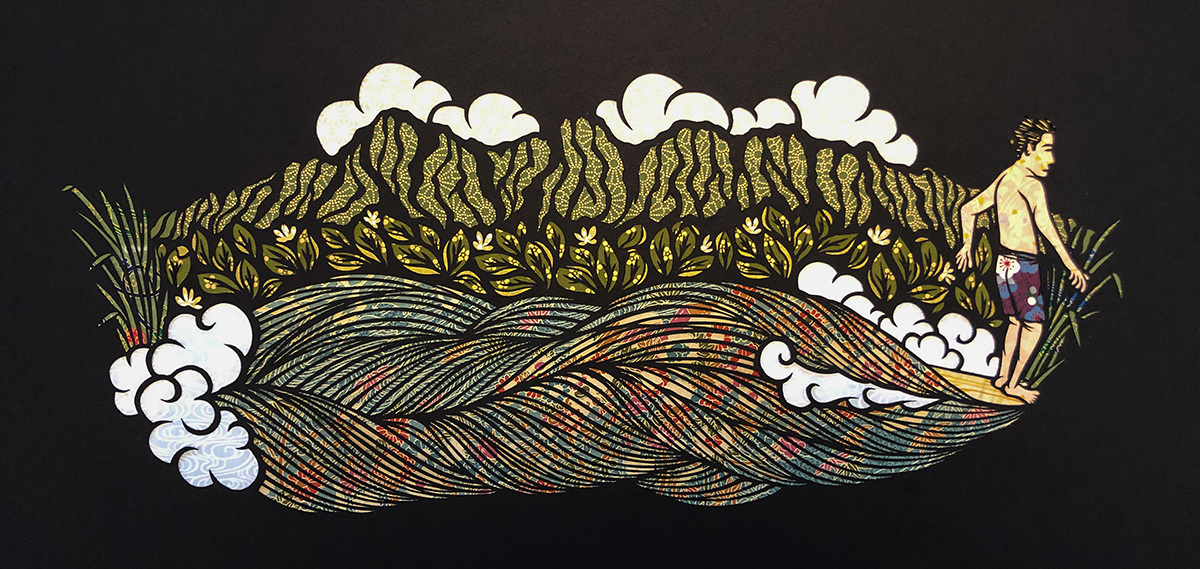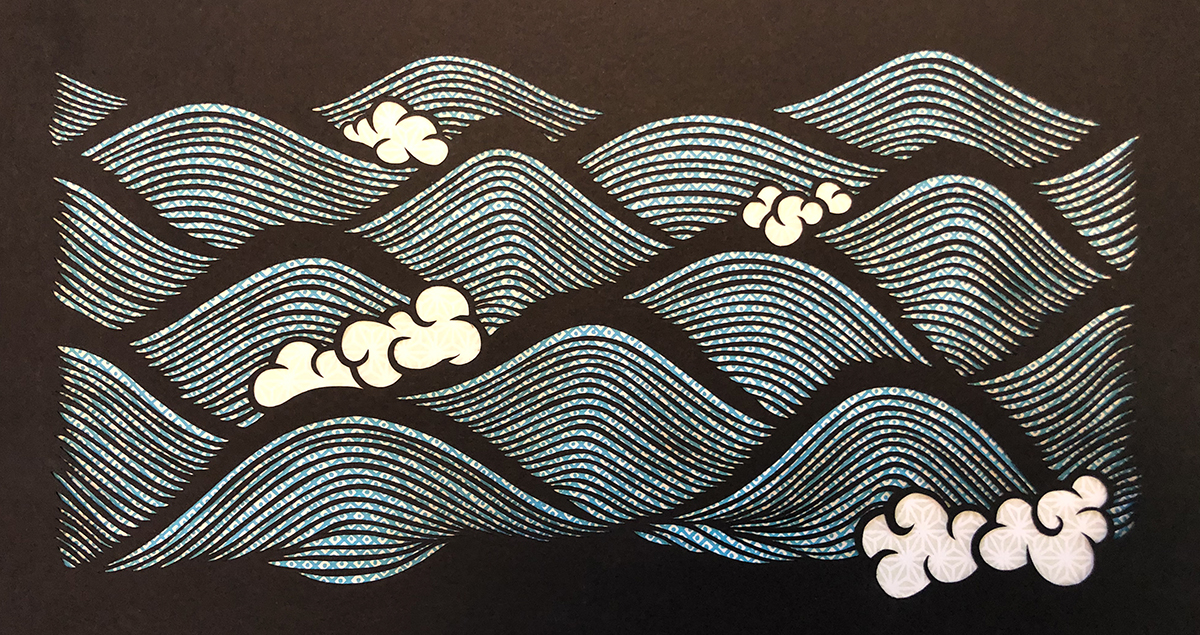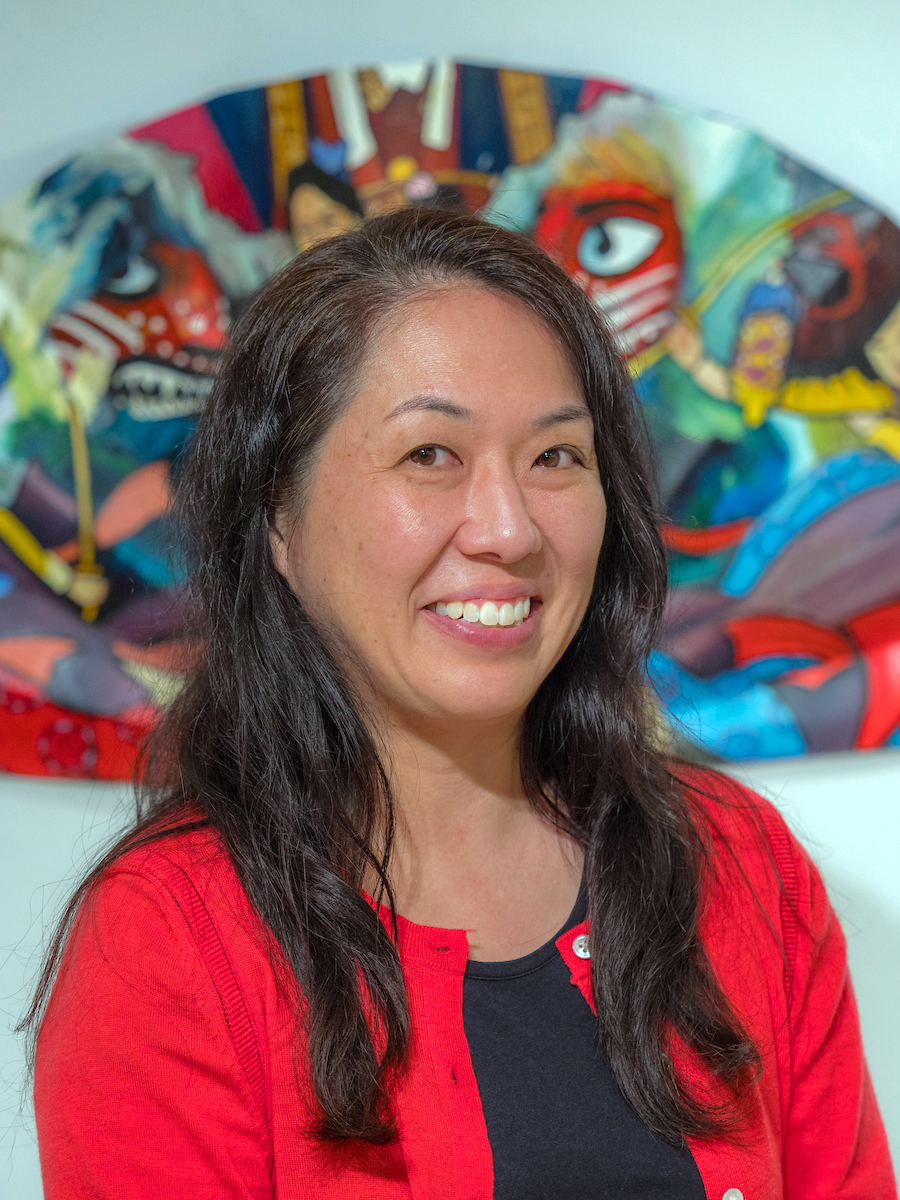We sat down with the kiri-e artist for a Q&A about his process, style and why his surfers are missing half their bodies.
By Lisa Shiroma
Published:
Editor’s Note: Through our partnership with the Hawai‘i State Art Museum, HONOLULU Magazine publishes a monthly blog written by Lisa Shiroma, owner of the HiSAM Museum Gallery Shop.

Photos: Courtesy of Andrew Imamura
During the day Andrew Imamura is a mild-mannered graphic designer working in downtown Honolulu. At night, he wields sharp blades. Self-taught in the Japanese art of kiri-e (“kiri” means cut, and “e” means picture/art), Imamura draws his designs on black paper and carefully cuts them by hand. He then layers the designs onto handmade Japanese paper, called chiyogami, a type of washi paper that has been hand stenciled or screen printed with traditional Japanese imagery and patterns, so that color and depth show through the negative spaces. We sat down with Imamura to talk about his art, which you can see now through Feb. 1 as part of the Winter Swell surf exhibit at the HiSAM Museum Gallery Shop by Mori x Art + Flea.
HONOLULU Magazine: When did you first discover the art of kiri-e?
Andrew Imamura: I first discovered kiri-e Japanese paper cutting around 10 to 12 years ago, maybe longer. I was really into woodblock printing and came across the work of a Japanese kiri-e artist named Shu Kubo. His pieces visually resembled ukiyo-e woodblock prints because of the striking outlines in his layered black and colored papers. And I was just hooked on the look of the paper cuts.

HM: In your bio it says you are self-taught. How did you research how to do kiri-e?
AI: I learned how to cut/print linoleum in high school, then gradually played around with woodblocks over the years. But that mindset in carving out prints is sort of the same with kiri-e. You cut out the negative space you want printed (or shown, in this case). I just went out and got a bunch of X-Acto knives and paper and practiced cutting. I also researched and looked at different artists and their styles on the internet.
HM: Where do you source the chiyogami paper you use? Is it from a particular shop in Japan?
AI: The use of the Japanese chiyogami paper was on accident. Traditionally, kiri-e artists layered their pieces with solid-colored paper or left the negative space blank (white). I happened to have some chiyogami paper around and just thought how that might look underneath layers and it really gave the cutouts more of a vibrant look. And I appreciate that chiyogami paper is a craft in itself, being hand screen printed on handmade washi paper. So I searched and searched to see if any other artists were using chiyogami paper as a backing and there weren’t, so I decided to incorporate them into my pieces to be part of my style.

I try and get them anywhere I come across them, but I mostly collect sheets at a store called Ito-ya in Ginza, Tokyo. I usually go to Japan once or twice a year and make a point to bring back as much paper as possible. Also, I found that locally, Ben Franklin carries a small section of chiyogami paper, which is super useful as well.
HM: Sometimes a surfer appears in your artwork who has a lower body but no upper body. What is the meaning behind it?
AI: To be honest, in the beginning I wasn’t really comfortable with drawing/cutting the upper body. And I kept it just at the lower half because I wanted to focus more on the “hang five” or “hang 10” of the surfer. And the oddity of just having the lower half stuck with me.
HM: How often do you go surfing? Where is your favorite spot?
AI: I would like to go surfing more often than I do now. Right now I’m a weekend warrior. My favorite spot is anywhere on the South Shore!

Imamura’s original works are part of the Winter Swell surf art exhibition on display at the HiSAM Museum Gallery Shop by Mori x Art + Flea now through Feb. 1. Prices range from $200 to $750. Instagram: @tsuru_67, andrewimamura.com
|
|
L
isa Shiroma is the owner of the HiSAM Museum Gallery Shop and runs it with partners Aly Ishikuni-Sasaki and Travis Sasaki from Mori by Art + Flea.
Lisa worked as gallery manager for Koa Art Gallery at KCC from 2014 to 2017.
In July 2017, Lisa, Travis and Aly renovated and reopened the Hawai‘i State Art Museum’s gift shop space as a new art gallery and gift shop “for Hawai‘i artists, by Hawai‘i artists.”






Recent Comments